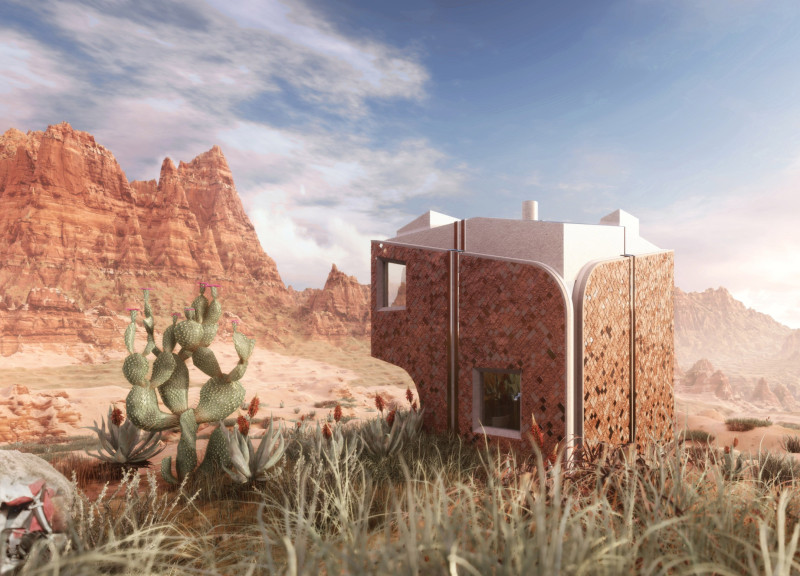5 key facts about this project
The design integrates ideas of nature and society within a residential setting that balances inner spaces with the external environment. It functions as a home while aiming to foster a deep connection between its inhabitants and the surrounding landscape. The overall concept is built around creating an atmosphere where people can live comfortably while remaining aware of and engaged with nature.
Materiality
-
Concrete and mud-brick are key materials in this design, selected for their strength and ecological benefits. This combination creates a facade that is both modern and reflective of local architectural styles. The choice of materials ensures durability while providing good insulation and energy efficiency. The design respects the site’s character and enhances its visual appeal.
Central Hearth
-
A central hearth is a focal element within the home, providing warmth and a space for gathering. It plays a crucial role in connecting family members and creating a sense of community within the house. This feature encourages people to come together, reinforcing the importance of shared areas in residential designs.
Sustainability Features
-
The layout includes systems for collecting and purifying water, as well as generating solar energy. These aspects highlight an emphasis on sustainability. By incorporating such systems, the home reduces its reliance on outside resources, enhancing its self-sufficiency. This thoughtful approach aligns with modern considerations for environmental responsibility.
Adaptability
-
The design is flexible, accommodating changes in use and lifestyle. Spaces can be reconfigured based on the needs of the occupants or seasonal conditions. This adaptability fosters a connection to nature, allowing the home to evolve alongside its inhabitants.
Large windows and openings connect indoor living areas with the outdoors, creating a comprehensive experience of the natural environment. This connection encourages a vibrant exchange between the residents and their surroundings, making the home feel integrated with nature.





















































